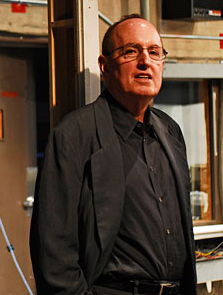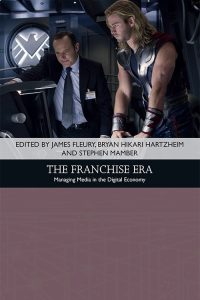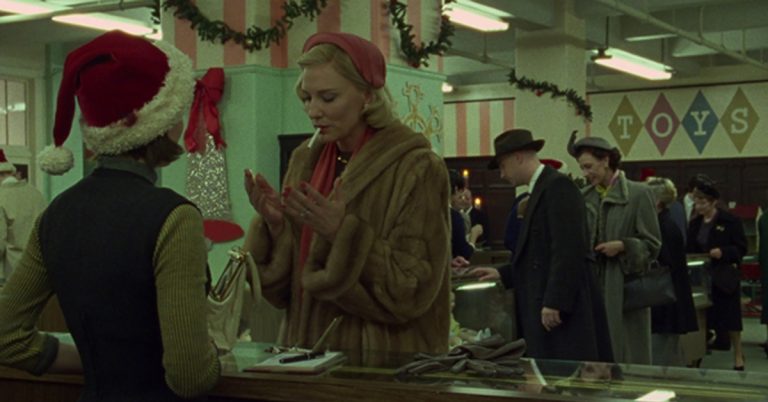
By James Fleury, Bryan Hikari Hartzheim and Stephen Mamber
This year marks a significant turning point for a number of recognizable media franchises: Avengers: Endgame brings several character arcs to a close within the Marvel Cinematic Universe, the series finale of Game of Thrones will arrive, and Star Wars: The Rise of Skywalker will conclude the “Skywalker Saga.” Of course, none of these franchises are truly coming to an end. Several film and TV follow-ups to Endgame are coming, starting with Spider-Man: Far from Home; HBO is developing a Game of Thrones prequel series (along with the novels George R.R. Martin intends to publish); and a number of Star Wars films and TV series remain in development. As we discuss in our newly released edited collection The Franchise Era: Managing Media in the Digital Economy, the franchise has become an integral element of the contemporary global media industries—particularly in Hollywood, where Silicon Valley technology companies (e.g., the so-called FAANG group of Facebook, Apple, Amazon, Netflix, and Google) continue to expand into the production and distribution of multiple media.
Below, we have adapted excerpts from the anthology’s introduction chapter. After briefly explaining why franchises have become such a prevalent part of the modern mediascape, we then provide an overview of two modern media franchise management trends: “soft reboots” and “cinematic universes.”
Why Franchises over Original Films?
The conglomeration of the American film and television industries has increasingly privileged franchises over original content. Today’s studio executives—unlike those the of the Classical Hollywood era—tend to come from a traditional business background, with little emotional attachment to (or, arguably, knowledge about) entertainment products. As part of diversified conglomerates, studios must deliver predictable income to shareholders; formulaic franchises help to create a better sense of predictability. Instead of one-off projects like the Disney historical drama The Finest Hours (Craig Gillespie, 2016) that carry high risk and limited value beyond the theatrical and home video markets, conglomerates want franchisable intellectual property capable of generating long-term value in the form of future installments, merchandise, theme park attractions, and apps. Franchise films and their array of ancillaries also provide a safety net in the case of box office failure.
“Soft” vs. “Hard” Reboots
In recent decades, media conglomerates have experimented with franchising strategies beyond sequels and prequels. The reboot, for instance, has helped to bring back ossifying franchises. Whereas “soft” reboots have existed for decades (e.g., whenever a new actor takes over as James Bond), the “hard” reboot gained popularity after 2005’s Batman Begins reset the cinematic Batman series. Because hard reboots have developed a negative reputation for abandoning all that came before (e.g., 2019’s Hellboy), soft reboots have become more common.
In particular, a type of soft reboot known as the “legacyquel”—a neologism that Matt Singer of ScreenCrush coined to describe a sequel featuring both new and “legacy” characters—serves to support a project’s cross-generational appeal. Based on the assumption that viewers will identify with characters like them, legacyquels have sought to lure older, infrequent moviegoers and more dedicated fans simultaneously with narratives in which an older generation of actors, reprising their “legacy” characters, “pass the torch” to a younger set (e.g., 2010’s Tron Legacy, 2015’s Creed, and 2018’s Halloween). The upcoming Ghostbusters “soft reboot,” for example, will ignore the events of the 2016 “hard reboot” so that a new set of characters can, presumably, inherit the franchise from the characters from the first two films. Legacyquels have appeared in other media beyond film, including television (e.g., Star Trek: The Next Generation) and video games (e.g., Gears of War 4).
Still, the concept’s viability remains to be seen. The Mission: Impossible franchise (1996-Present) seemingly has moved beyond Jeremy Renner’s legacyquel-intended character in favor of long-time franchise headliner Tom Cruise, the upcoming fifth Indiana Jones film reportedly won’t feature the hero’s son introduced in the preceding entry, and numerous cinematic and televisual efforts have performed below commercial expectations (e.g., 2016’s Independence Day: Resurgence and the single-season TV series 24: Legacy). Even if the legacyquel trend proves short-lived, however, the franchise model will remain dominant due to a number of factors that reflect media industry changes in the U.S. and around the world.
Cinematic Universes Over Tentpole Films
While tentpole, “event” films have existed at least since 1975’s Jaws, they represented just one part of a studio’s production strategy. Today, however, studios have come to consider standalone franchises like Jaws as less valuable than cinematic universes—extended film narratives that connect multiple movies, characters, and storylines. Back in the 1930s to the 1950s, Universal presented a prototype shared universe, as its “Universal Monsters” franchise included series focused on individual characters as well as crossovers that brought these characters together in a single film (e.g., the print ads for 1944’s House of Frankenstein declared, “All together! Frankenstein’s monster! Wolf Man! Dracula! Hunchback! Mad Doctor!”). Although cinematic universes would appear sporadically in subsequent decades (e.g., the “View Askewniverse” that began with Kevin Smith’s 1994 film Clerks), the concept exploded in popularity after Marvel Studios launched the Marvel Cinematic Universe (MCU) with Iron Man. Modeled after Marvel’s characters that inhabit the same fictional storyworld in the comic books, the MCU has shown studios the predictable profits that cinematic universes can deliver. One reason for this shift from standalone franchises to cinematic universes, therefore, lies in this predictability. Like sequels, cinematic universes provide reliable revenue and predictable costs, but reduce the wait-time between theatrical releases and the potential for diminishing returns.
Like legacyquels, the concept of cinematic universes has found mixed success. Whereas Marvel Studios has produced a seemingly infinite number of hit films, other studios have struggled (e.g., Warner Bros.’s DC Extended Universe and LEGO franchise). Even with Marvel, there remain concerns about the effect of the cinematic universe concept on filmmaking going forward. For instance, the “director problem” on Star Wars and MCU films, whereby numerous filmmakers have been replaced due to “creative differences,” gives the cynical impression that, under the cinematic universe model, directors have become largely interchangeable. Meanwhile, stars also have faced challenges with cinematic universes. Tom Cruise, for one, may have found continued commercial and creative success with the Mission: Impossible franchise, on which he serves as a producer, but his management skills did not translate to 2017’s The Mummy. Despite Universal developing the film as part of a planned “Dark Universe” reboot of its earlier “Universal Monsters” cinematic universe, Cruise “exerted nearly complete creative oversight” throughout the production. Even though Robert Downey Jr. received top-billing (and a salary to match) for his appearances in Marvel’s Avengers films, the case of The Mummy suggests the seeming incompatibility of movie stars and cinematic universes. Critics also have lamented the effect that cinematic universes will have on storytelling, arguing that crossovers like 2018’s Avengers: Infinity War feature too many characters to properly develop. Finally, while cinematic universes might seem like an ideal component of transmedia storytelling (in which a single story is told across multiple media texts and platforms), their very name underscores the reality that they often support a narrative and production hierarchy in which films reign supreme over any non-cinematic text; for example, the films of the MCU have, until 2019’s Avengers: Endgame, exerted a one-way exchange of influence over the creative decision-making on the universe’s TV series.
Conclusion
Soft reboots and cinematic universes represent just two of the trends that we explore in the introduction chapter. Others include the contemporary absence of mid-budget projects, the emphasis on franchise characters over film stars, and the increasing significance of international markets (e.g., China) for American studios. Overall, the essays in the edited collection examine the role of the franchise in the media industries’ responses to ongoing digital technology developments.
The Franchise Era: Managing Media in the Digital Economy, edited by James Fleury, Bryan Hikari Hartzheim and Stephen Mamber, is now available to order. Find out more on the Edinburgh University Press website










[…] – Edinburgh University Press Blog. [online] Edinburgh University Press Blog. Available at: https://euppublishingblog.com/2019/06/06/an-overview-of-the-media-franchise-from-jaws-to-the-avenger… [Accessed 26 Nov. […]